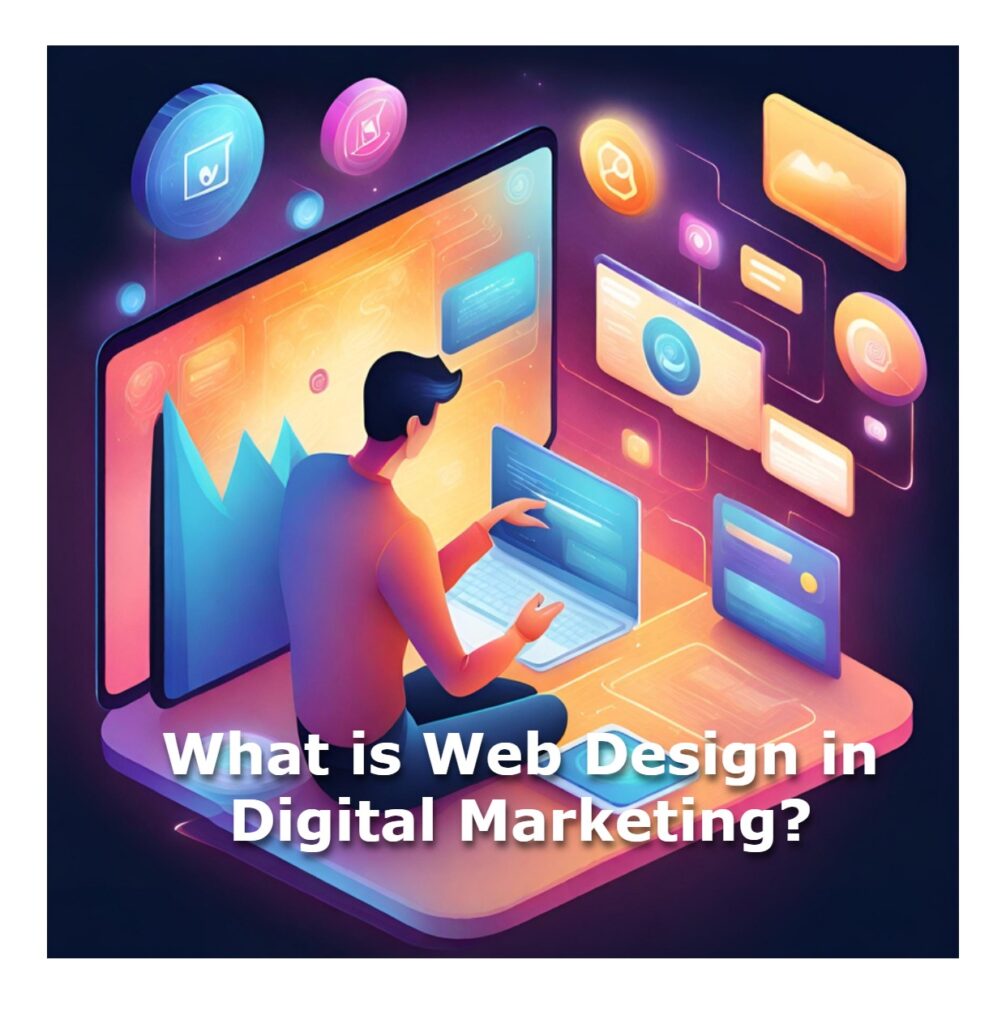Discover the significance of what is web design in digital marketing, its role in enhancing online presence, and its impact on business success. Learn the fundamentals and explore how effective web design strategies can elevate your brand visibility, engagement, and conversion rates.
Introduction
In today’s digital landscape, understanding the intricacies of web design within the realm of digital marketing is paramount for businesses aiming to thrive online. Web design goes beyond aesthetics; it encompasses functionality, user experience, and optimization for search engines. This article delves into the core concepts of what is web design in digital marketing, shedding light on its pivotal role in establishing a strong online presence and driving business growth.
The Essence of Web Design in Digital Marketing
Embark on a journey to grasp the essence of what is web design in digital marketing and its profound impact on modern businesses. Gain insights into how strategic web design can elevate your brand’s online visibility, user engagement, and conversion rates.
Understanding Web Design Fundamentals
Unveil the fundamental principles underlying effective web design and their significance in crafting compelling digital experiences. Explore the elements of layout, typography, color theory, and responsiveness that contribute to creating visually appealing and user-friendly websites.
The Intersection of Design and User Experience (UX)
Delve into the symbiotic relationship between web design and user experience (UX), elucidating how intuitive navigation, seamless interactions, and accessibility foster positive user engagement. Discover how a well-crafted user experience can enhance brand perception and foster customer loyalty.
Optimizing for Search Engines (SEO)
Unlock the secrets of optimizing web design for search engines, ensuring maximum visibility and organic traffic. Explore the importance of on-page SEO elements, site structure, and mobile responsiveness in improving search engine rankings and driving targeted traffic to your website.
Harnessing the Power of Visual Storytelling
Embrace the art of visual storytelling and its role in captivating audiences and conveying brand narratives effectively. Learn how strategic use of imagery, videos, and graphics can evoke emotions, enhance engagement, and leave a lasting impression on visitors.
Responsive Design for Seamless Adaptability
Navigate the realm of responsive design and its significance in catering to the diverse needs of users across various devices and screen sizes. Uncover the principles of fluid grids, flexible images, and media queries that enable seamless adaptability and optimal viewing experiences.
Integrating Calls-to-Action (CTAs) for Conversion Optimization
Master the art of integrating persuasive calls-to-action (CTAs) strategically throughout your website to guide visitors towards desired actions. Explore the psychology behind effective CTAs and discover techniques to enhance conversion rates and drive measurable results.
Continuous Optimization and Performance Monitoring
Embrace a culture of continuous optimization and performance monitoring to ensure your website remains competitive and aligned with evolving market trends. Learn how analytics tools and user feedback can provide valuable insights for refining your web design strategy and maximizing ROI.
FAQs (Frequently Asked Questions)
What is web design in digital marketing? Web design in digital marketing refers to the process of creating and optimizing websites to enhance online presence, user experience, and achieve marketing objectives. It encompasses elements such as layout, visual aesthetics, functionality, and search engine optimization (SEO).
 How does web design impact digital marketing efforts? Effective web design plays a crucial role in digital marketing by shaping the online presence of businesses, influencing user perceptions, and driving conversions. A well-designed website enhances brand credibility, fosters user engagement, and improves search engine visibility, thereby contributing to the success of digital marketing campaigns.
How does web design impact digital marketing efforts? Effective web design plays a crucial role in digital marketing by shaping the online presence of businesses, influencing user perceptions, and driving conversions. A well-designed website enhances brand credibility, fosters user engagement, and improves search engine visibility, thereby contributing to the success of digital marketing campaigns.
What are the key elements of web design? Key elements of web design include layout, typography, color scheme, imagery, navigation, responsiveness, and usability. Each element contributes to creating a cohesive and visually appealing website that delivers a seamless user experience across devices.
Why is responsive design important in web design? Responsive design is essential in web design as it ensures optimal viewing experiences across various devices, including desktops, tablets, and smartphones. By adapting the layout and content dynamically based on screen size and orientation, responsive design enhances usability and accessibility, ultimately improving user satisfaction and engagement.
How can web design impact search engine optimization (SEO)? Web design significantly influences search engine optimization (SEO) by affecting key ranking factors such as site structure, loading speed, mobile-friendliness, and user experience. A well-optimized website with intuitive navigation, relevant content, and fast loading times is more likely to rank higher in search engine results pages (SERPs) and attract organic traffic.
What are some best practices for effective web design in digital marketing? Some best practices for effective web design in digital marketing include prioritizing user experience, optimizing for mobile devices, ensuring fast loading times, incorporating visual storytelling elements, implementing clear calls-to-action (CTAs), and regularly monitoring performance metrics. By following these practices, businesses can create compelling websites that resonate with their target audience and drive meaningful interactions.
Conclusion
In conclusion, understanding the significance of what is web design in digital marketing is imperative for businesses seeking to establish a strong online presence and drive sustainable growth. By mastering the principles of web design, optimizing for search engines, and prioritizing user experience, businesses can create compelling websites that resonate with their target audience, foster engagement, and drive conversions.
Related Article: Unlocking Success: The Role of SEO in Small Business Growth


